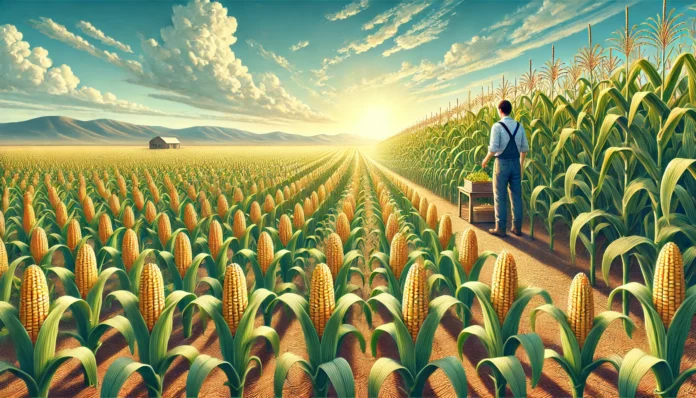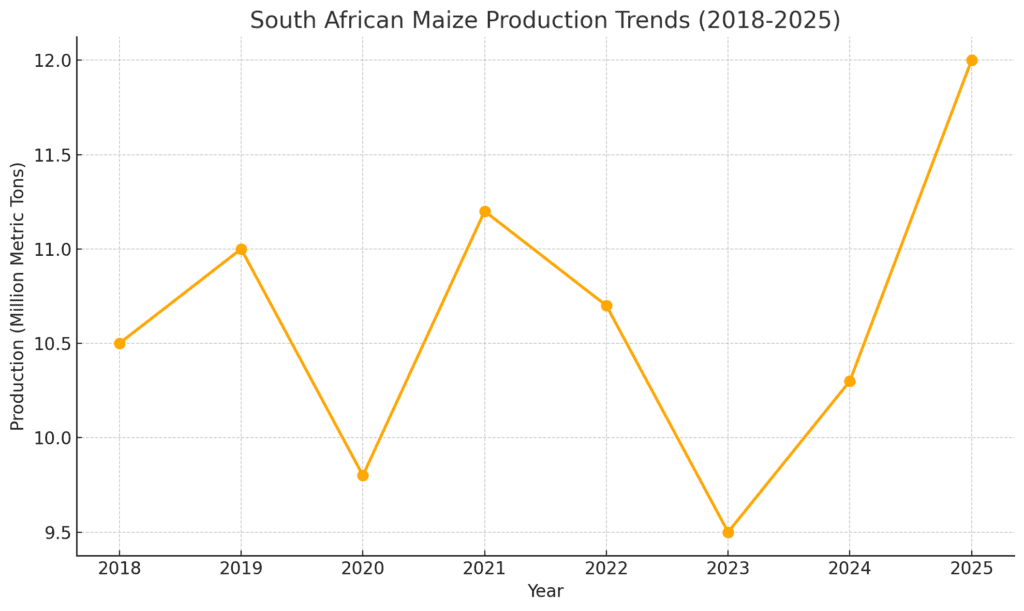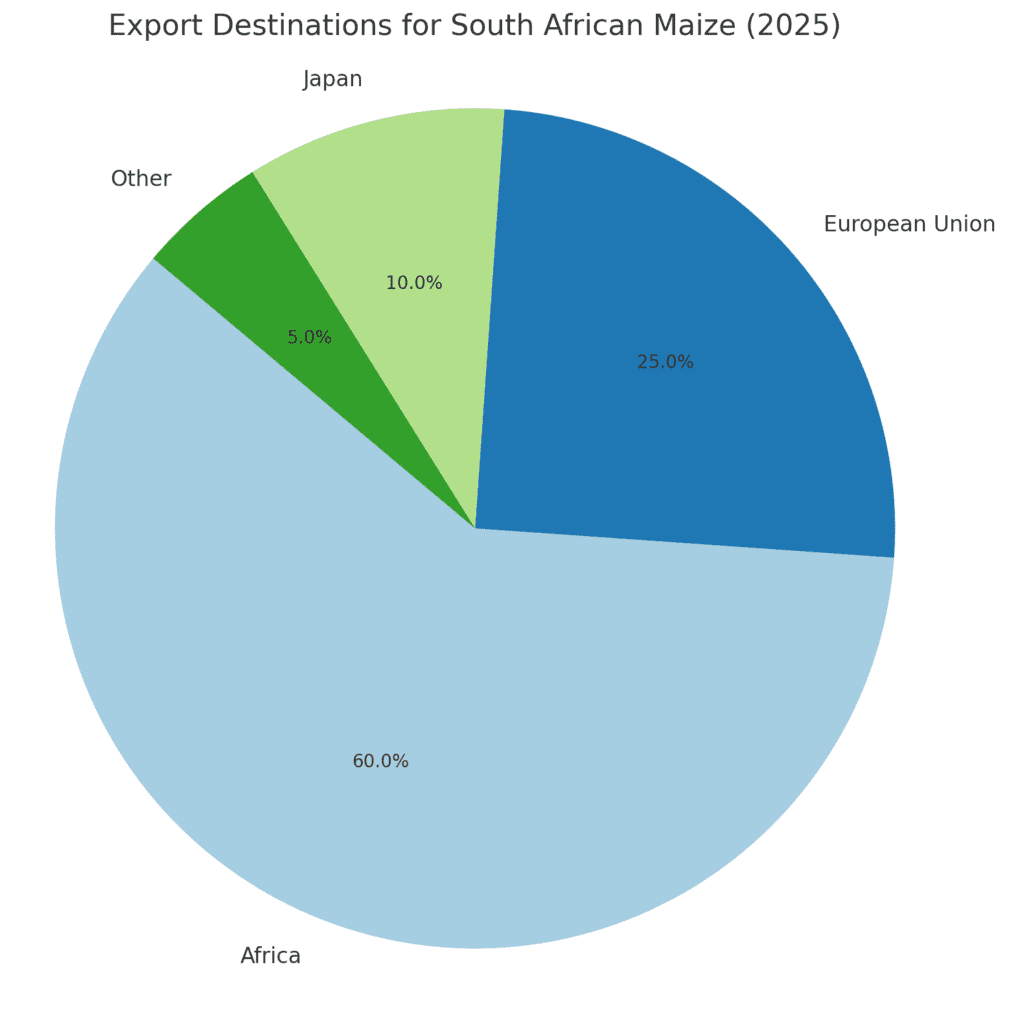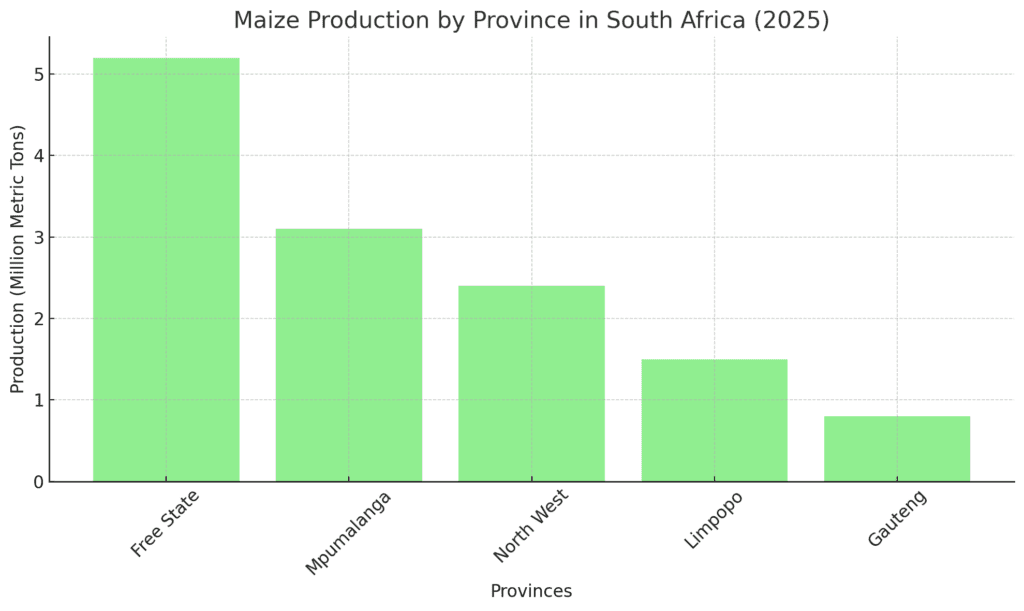
Introduction
Corn, also known as maize, plays a pivotal role in South Africa’s agriculture, food security, and economy. As the largest producer of maize on the African continent, South Africa’s maize industry supports both local consumption and export markets. This article dives into the key factors shaping the maize production landscape in South Africa, highlighting the trends, challenges, and the future of the industry.

The Importance of Maize in South Africa
Maize is not only a staple food for millions of South Africans, but it also serves as animal feed, biofuel, and industrial products. The country produces a variety of maize, including yellow maize (for animal feed and export) and white maize (used for food). This dual purpose makes maize an essential crop for South Africa, especially for rural communities that depend on maize for both food and income.
In recent years, maize production has seen fluctuations due to changing weather patterns, input costs, and global market dynamics. However, South Africa remains one of the top 10 maize producers globally, with significant contributions to both regional and international food markets.
Key Producers and Regions
South Africa’s maize is primarily grown in the summer rainfall regions of the country, with the Free State, Mpumalanga, North West, and Limpopo provinces serving as the key maize-producing areas. These provinces benefit from fertile soil and favorable climates for maize cultivation, which supports the country’s large-scale production.
Key Producing Regions:
- Free State: The Free State is the largest maize-producing province in South Africa, contributing a significant portion of the country’s total output.
- Mpumalanga: Known for its fertile soils and favorable climate, Mpumalanga is another major contributor to South Africa’s maize industry.
- North West: With a warm climate and good agricultural infrastructure, North West province is essential in maize production.
Production Trends and Challenges
South Africa’s maize production has faced several challenges over the years, particularly droughts and fluctuating market prices. The country has experienced both surpluses and shortages, depending on seasonal conditions, leading to volatility in production levels. In 2025, maize production is estimated to reach approximately 12 million metric tons, with local consumption accounting for a significant portion.
Challenges Facing the Industry:
- Weather Conditions: Droughts and erratic rainfall have affected maize yields, particularly in the critical growing regions.
- Rising Input Costs: The cost of inputs such as fertilizers, pesticides, and labor has increased, squeezing margins for farmers.
- Global Market Volatility: The South African maize industry is exposed to global price fluctuations, impacting export competitiveness.

The Role of Maize Exports
South Africa is a major exporter of maize in Africa, supplying maize to countries such as Zambia, Zimbabwe, Mozambique, and other nations in Sub-Saharan Africa. Additionally, South Africa’s yellow maize is exported globally, making the country an important player in the global maize trade. However, export markets are sensitive to global price trends, weather conditions, and logistical challenges.
Key Export Destinations:
- Africa: South Africa supplies maize to several neighboring African countries, where it is used for both food and animal feed.
- Global Markets: Countries like Japan and the European Union import yellow maize for industrial use and animal feed.
Future Outlook
The future of South Africa’s maize production looks promising, thanks to advancements in agricultural technology, improved irrigation systems, and government support. There is a push to increase productivity through better seed varieties and more efficient farming practices. Additionally, South Africa is exploring sustainable farming methods to mitigate the impact of climate change and ensure the continued success of the maize industry.
Opportunities:
- Technology Integration: The adoption of precision farming, drones, and satellite technology can improve yields and reduce costs.
- Sustainable Farming Practices: Implementing conservation farming practices and water management techniques can help mitigate the effects of droughts and preserve resources.
Conclusion
South Africa’s maize production industry remains a cornerstone of the country’s agricultural economy. Despite challenges like climate change and market volatility, the maize sector continues to thrive, contributing to food security, employment, and trade. With ongoing innovation and support, South Africa is well-positioned to remain a global leader in maize production for years to come.




